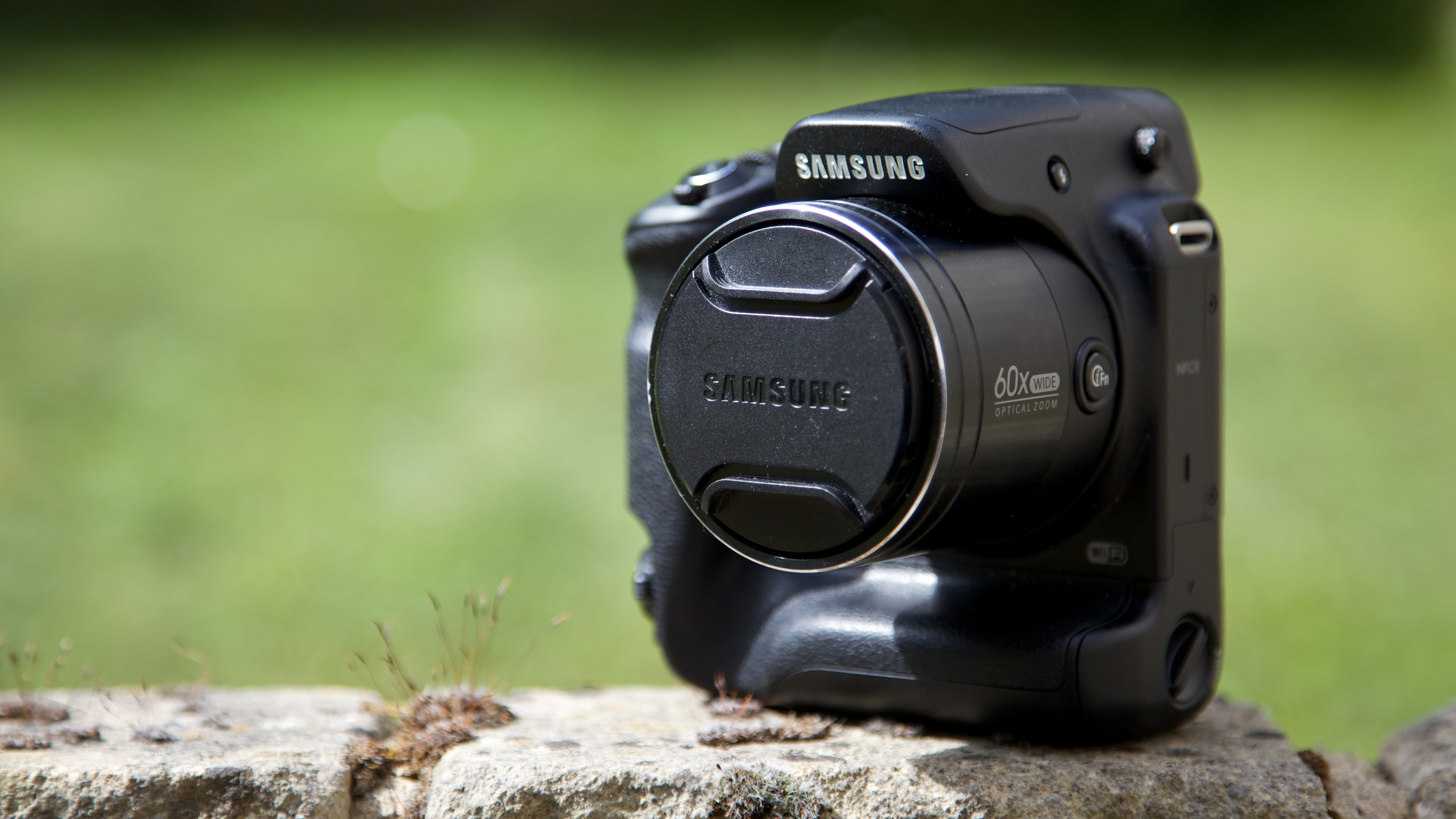Why you can trust TechRadar
The WB2200F disappoints slightly in terms of performance. While it appears to activate quickly, the controls remain inoperable for a second or two after a live view image first appears on the screen, leading to frustration and a lot of waggling of the zoom switch.
Once it is on, the zoom operates well, smoothly extending to frame the subject and nicely setting you up for another disappointment: the contrast detection autofocus.
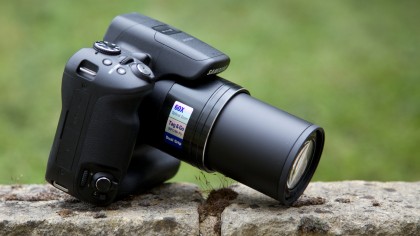
Particularly at longer focal lengths, the lens can have trouble focusing. The 60x zoom means there's a lot of glass to move about, and also means the minimum focus distance changes (in Normal AF mode) from 80cm at full wide to 350cm at full tele. With no way of telling if you're too close, it's perfectly possible to zoom in to a subject to capture a detail only to be unable to focus. Auto Macro mode mitigates this problem somewhat, opening up the lens' full range of focus distances, but the focus also seems flaky when shooting far-off subjects at full zoom.
We also recorded a number of false positives, the cheery beep and green square signifying the camera is convinced it has focused when the screen shows nothing but a blur.
When it focuses, image quality is good. The metering, exposure and auto white balance setting seem accurate, only blowing out whites in extremely high contrast situations and rendering skies well. Sharpness falls of a little toward the edges of the frame, but nothing you'd notice without looking hard. Colours are accurate and there's little chromatic aberration to be seen outside of high-contrast edges near the side of the frame, where purple fringing can occur.
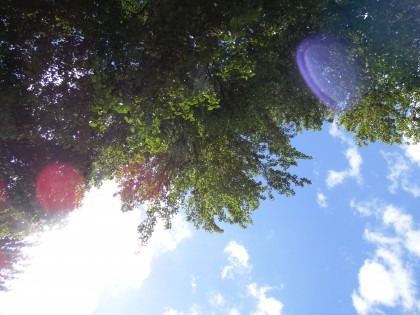
Lenses with a wide zoom range are always a compromise, however, and the WB2200F is let down by its propensity to flare. Shoot anywhere vaguely in the direction of the sun and you're risking a kaleidoscope of red and purple dots.
At the long end of the zoom range, and in the Super Macro mode that pulls the lens back to its widest, it's quite possible to achieve depth of field effects, and the resultant out of focus areas are smooth, with a pleasing graduation between colours and light and dark areas. Spot metering is available, along with various AF modes including subject tracking and a manually positioned single point. The fastest shutter speed is 1/2000 of a second, great for stopping action.
Smart features
The headline smart camera features are mostly a success. With the Samsung Smart Camera app installed on a compatible smartphone (we used a Galaxy S4) a simple press of the back of the phone against the NFC logo on the side of the camera will launch the app and begin connecting. It's not quite the quick 'bonk' we were promised by adverts, you'll need to hold it there for a second or two, but it's a quick and largely hassle-free way of getting camera and phone talking.
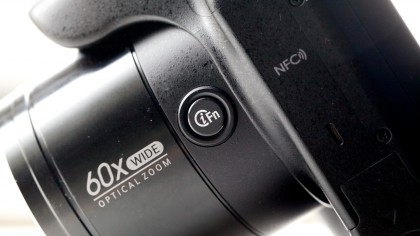
When connected, there's not much you can do with the app beyond using it as a remote viewfinder and transferring pictures. The lens can be zoomed from the phone or tablet, but one quirk we discovered is that, while the zoom slider can be slid with a finger in addition to using the plus and minus on-screen buttons, this has no effect on the camera. It responds to the buttons only. This is something that can probably be fixed with a firmware or app update, but it's disappointing to see that one of the relatively few features doesn't work properly.
Sharing directly from the camera to Facebook worked immediately, creating its own album on the site for the photos and posting them to the news feed. We encountered a problem with uploading to Dropbox, however, as the API request screen asked for us to input the words from an invisible captcha. The other choices are email and Picasa, the lack of options to share pictures via Flickr and Twitter seeming baffling omissions.
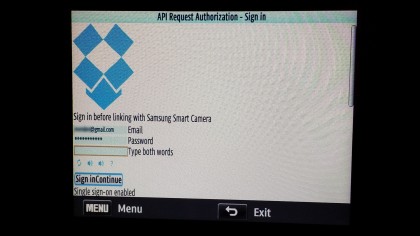
The WB2200F has plenty of editing options built in, although using them with a non-touchscreen can get annoying, as does entering router passwords and login details for the online services. There's a small complement of Smart Filters, one-shot alterations to your images that are saved as new files, and an editing mode that allows you to tweak brightness, contrast, colour saturation and fix red-eye and the like. All the editing functions are accessed from their own position on the mode dial, but the options are nowhere near as broad as those on a computer editing program or even a smartphone app.
Verdict
It's hard to know who the WB2200F is for. The portrait grip, which improves handling and battery life, also makes the camera bulky. The 60x zoom lens, which allows an impressive range of focal lengths, can focus very closely and opens to a reasonable wide aperture, is hampered by an AF system that doesn't seem to be able to keep up. It may be the perfect thing to take along to an event, shoot all day then upload your photos to Facebook via a smartphone, but the photographer who'll make use of all its functions is rare.
If you're planning to shoot in portrait orientation a lot then the addition of an extra shutter release button may make your day more comfortable, but a low-end DSLR combined with a cheap 50mm prime may be a better choice for shooting portraits of people, as the sensor will be larger and the aperture wider.
The bridge camera market is a buoyant one at present, with plenty of innovation from manufacturers such as Nikon and Sony alongside Samsung, and in many ways it's heartening to see a company being prepared to try something like this.
We liked
The range of features on offer, the enormous zoom range and the ability to take manual or semi-automatic control of the camera. Samsung has thrown the kitchen sink at this camera, and it certainly never feels like it's crying out for a missing feature or modern convenience.
We disliked
The AF system, the lack of touchscreen, the small, distant, EVF and the vertical grip that means it needs a case meant for a DSLR.
Final verdict
It feels odd at first, but the WB2200F grows on you the more you use it. The size added by the vertical grip is forgivable as it also adds extra battery life, but the problems with the AF system are more concerning. The camera delivers feature after feature, even if they're not all 100% successful, and if the ability to share your photos immediately after you've taken them, completely wirelessly, is important to you, then it achieves this quickly and smoothly.
